In the Forest of Death at Izyum (Photo story, GRAPHIC)
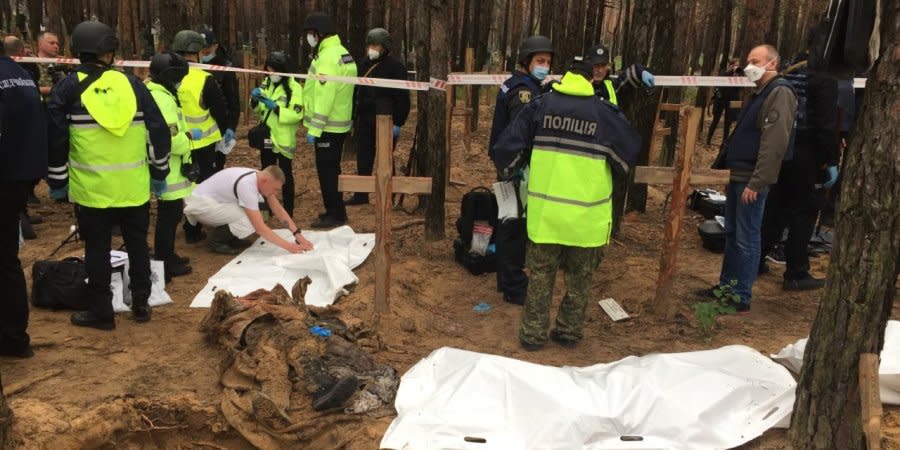
- Oops!Something went wrong.Please try again later.
Read also: At least two more weeks to exhume bodies from Izyum mass graves, mayor says
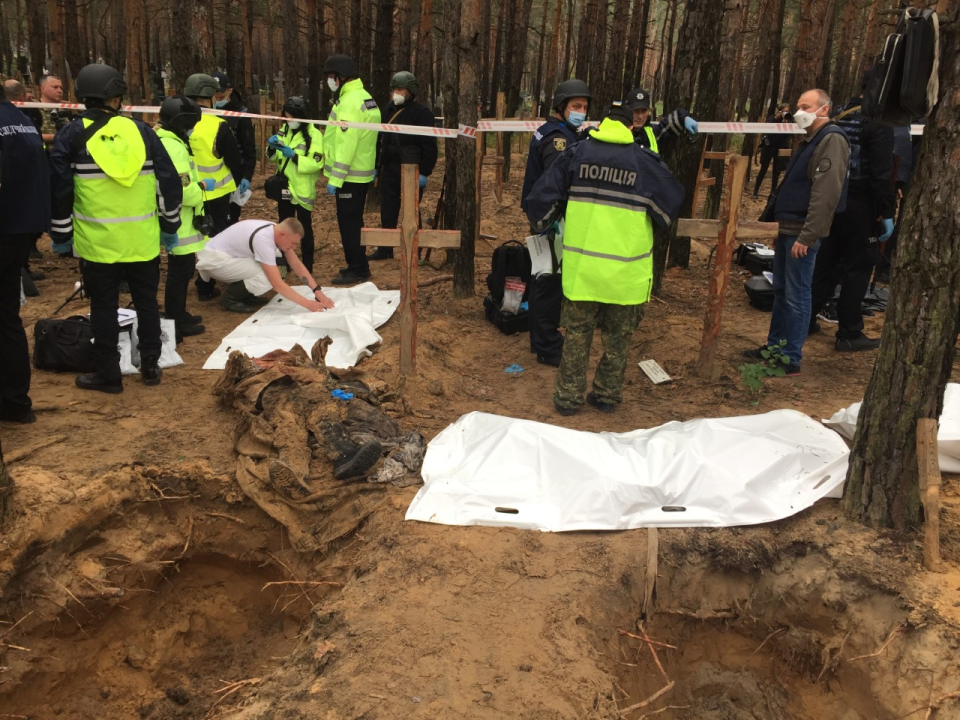
Dozens of firemen, police, and soldiers have been sent to a forest cemetery near Izyum in newly liberated Kharkiv Oblast to unearth the remains of people killed during Russia’s military occupation of the area. The site has more than 440 fresh graves, many with no names, but just numbers, etched on simple wooden crosses.
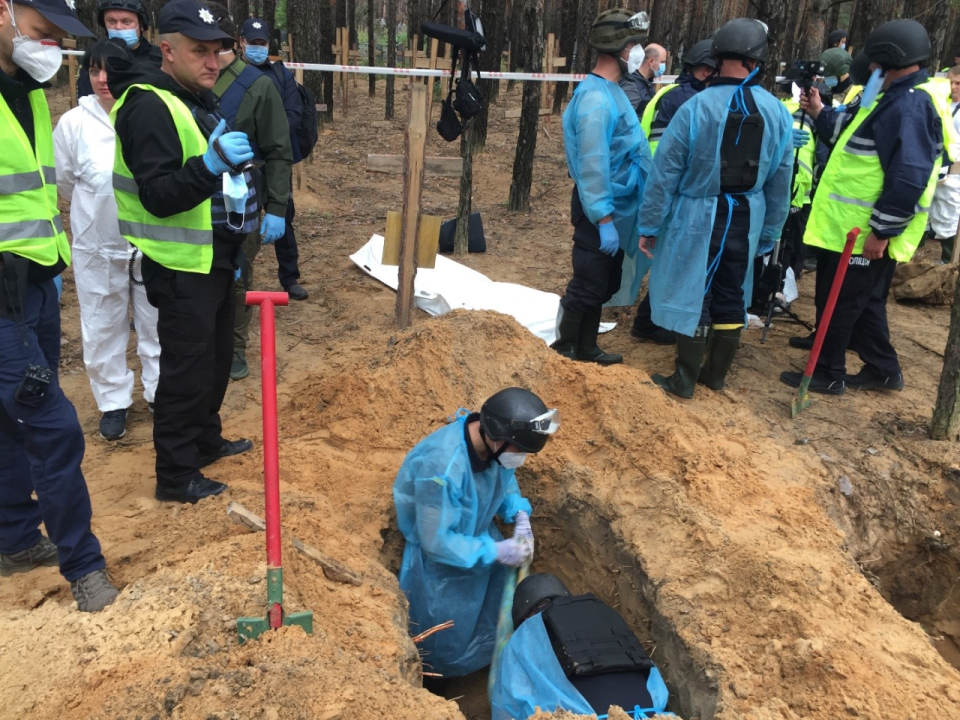
As the bodies from the first graves were exhumed, it was clear that some had not only died violent deaths, but had been subjected to torture before being killed. The bodies of men, women and children were found. Some are suspected to have been killed in Russian shelling of Izyum when the Russians attacked and captured the city.
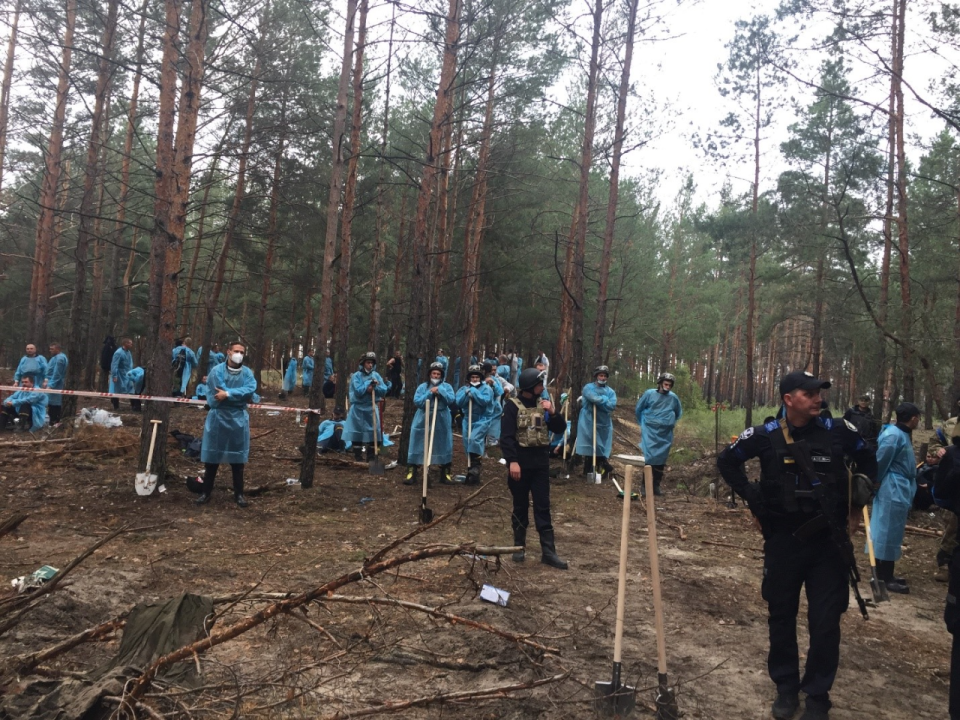
Firemen, police and soldiers take a break during the exhumation of bodies at a grave site in a forest near Izyum, Kharkiv Oblast. Forensic experts are working at the site to established how the people buried there died. Local officials have said 99% of the people show signs of having suffered a violent death.
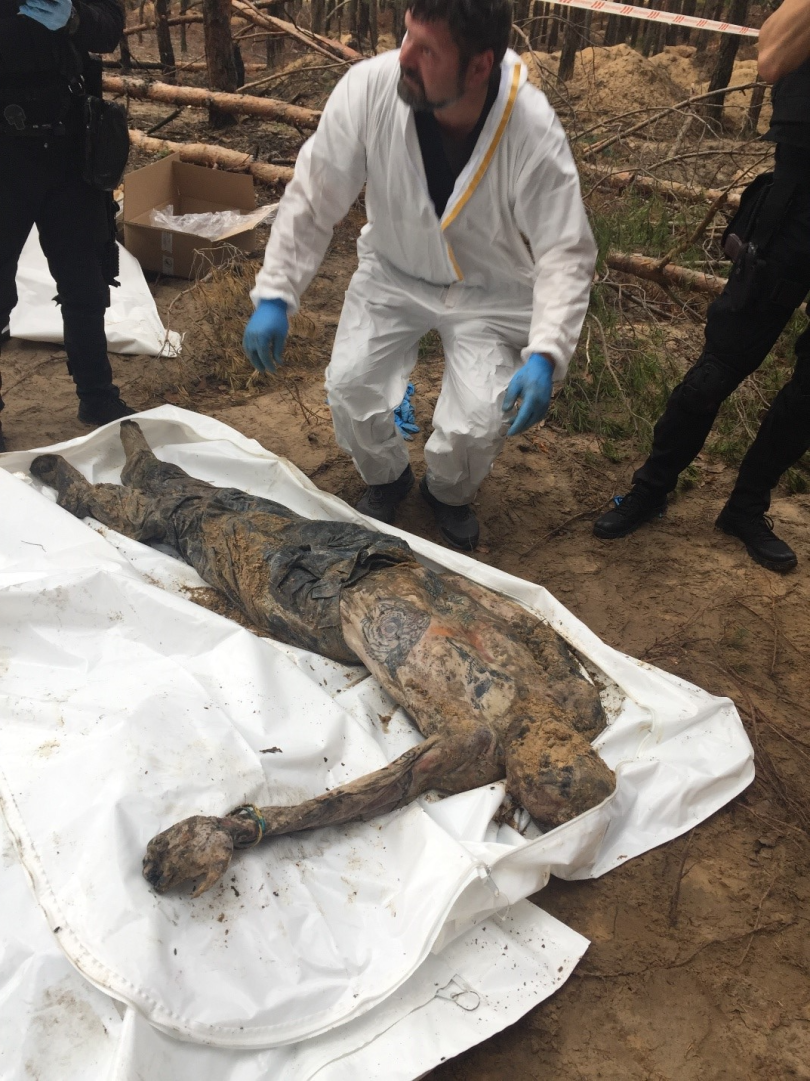
The desiccated body of a man exhumed from a grave at a forest burial site near Izyum, Kharkiv Oblast. The body was still wearing a bracelet in the blue and yellow colors of the Ukrainian flag. The man was later identified by his tattoos as Serhiy Sova, a Ukrainian soldier who had served with the Kholodny Yar 93rd Mechanized Brigade. Sova, a resident of Nikopol, Dnipropetrovsk Oblast, had fought in Ukraine’s army since the war with Russia began in 2014.
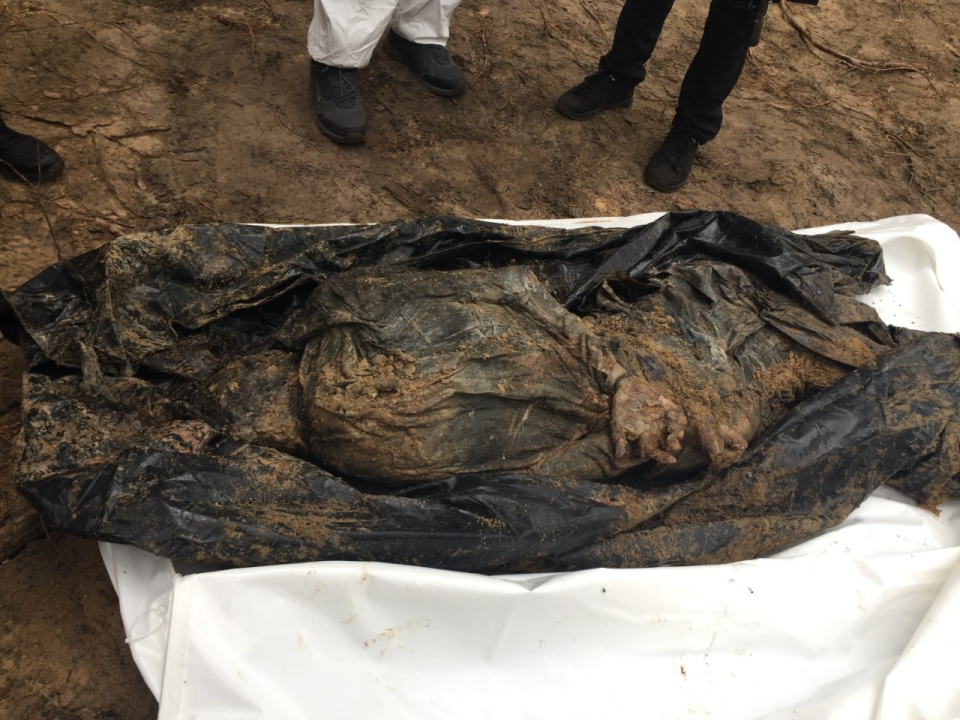
Other bodies, like that of this man, with his hands still tied behind his back, showed signs of having suffered an execution-style murder – similar to the ones the Russia army carried out in atrocities in Bucha and other suburban towns in Kyiv Oblast in March. Yet more bodies bore signs of having been tortured and/or mutilated before death. At least one man had been castrated.
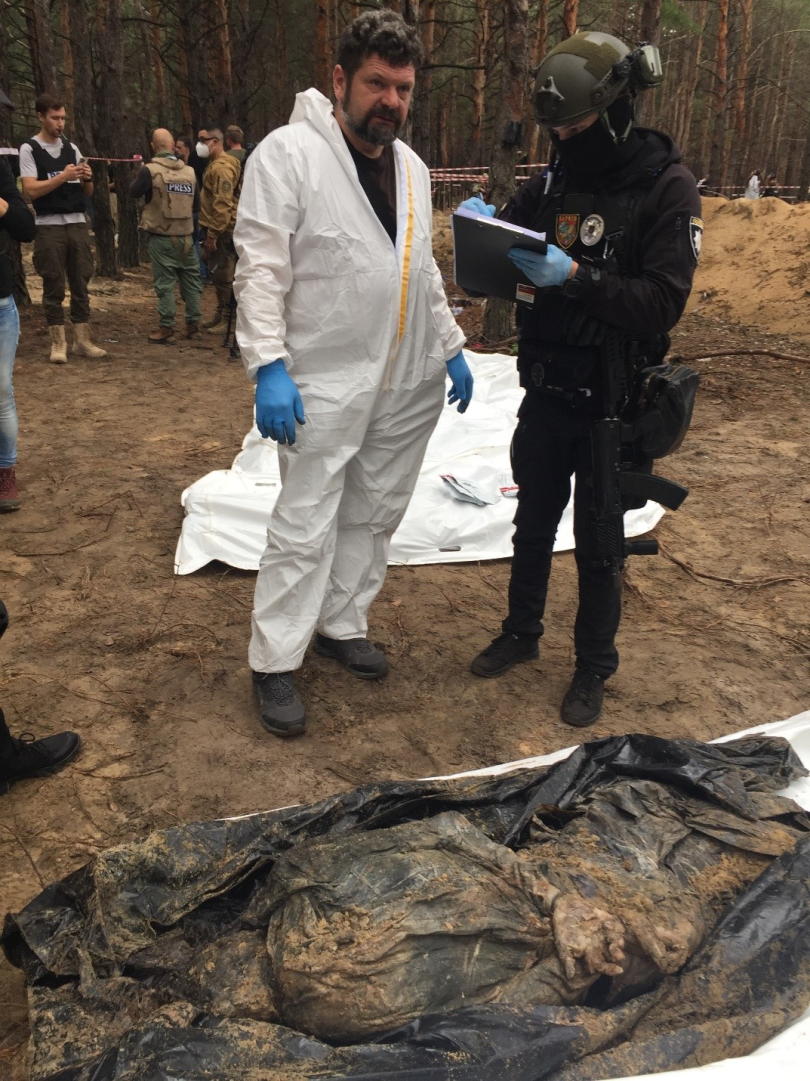
A forensic scientist gives a police officer the preliminary findings of his examination of a body exhumed from what is now a suspected war crimes site. Locals have told police that Russian soldiers demanded money to record the names of those buried to be put on the grave markers. Many of the wooden crosses marking the graves have only numbers, and part of the work will be to identify the bodies they contain.
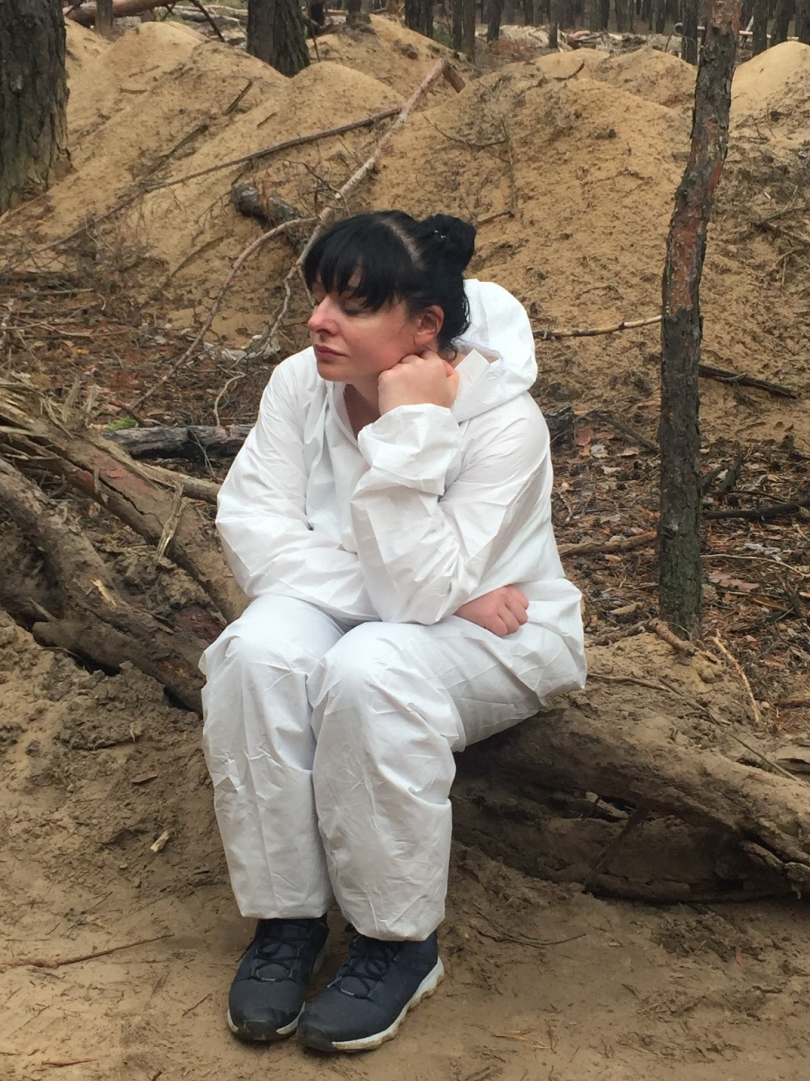
A distraught forensic scientist rests after carrying out examinations of some of the 176 bodies so-far exhumed from a mass burial site near the newly liberated town of Izyum in Kharkiv Oblast. Local authorities are collecting evidence of possible war crimes committed by the Russian occupation forces that were in control of the area for more than six months.
Read the original article on The New Voice of Ukraine
